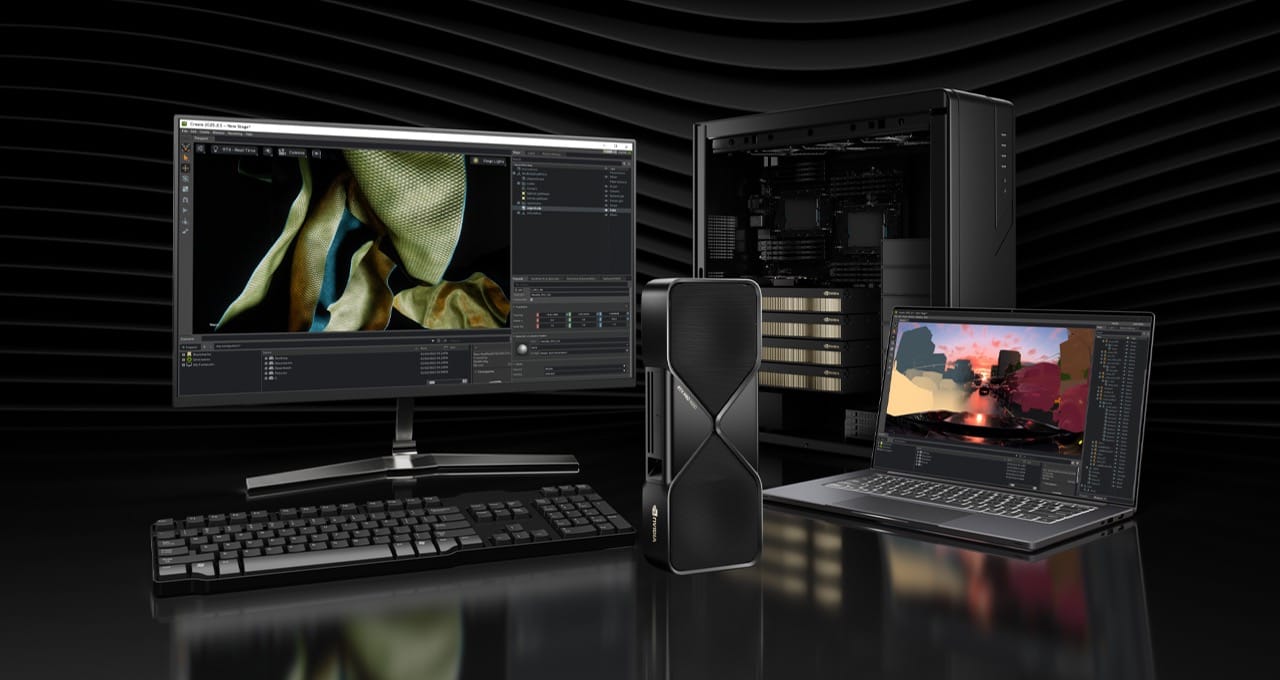NVIDIA unveiled its roadmap for the next generation of AI computing at its annual GTC conference in San Jose, transforming what was once an academic event into what CEO Jensen Huang called “the Super Bowl of AI.” The conference attracted over 25,000 attendees and industry leaders as NVIDIA announced key developments in GPU architecture, robotics, and partnerships.
Next-Generation Chips: Blackwell Ultra and Vera Rubin
NVIDIA announced its Blackwell Ultra GPU, set to launch in the second half of 2025. This upgraded version of the current Blackwell architecture will feature more memory to support larger AI models.
Looking further ahead, NVIDIA revealed details about Vera Rubin, its next-generation architecture scheduled for release in the second half of 2026. The Rubin system promises to be 14 times more powerful than today’s supercomputers while consuming less power.
NVIDIA also revealed plans for Feynman chips, expected in 2028, continuing their product roadmap.
The AI Factory Platform
NVIDIA introduced a unified platform combining Blackwell Ultra GPUs, Grace CPUs, and advanced networking solutions. This “AI Factory” aims to optimize generative AI workloads and improve efficiency as the industry shifts from training models to inference (getting detailed answers from AI systems).
Huang addressed recent concerns about the company’s position in the market: “Almost the entire world got it wrong. The amount of computation we need as a result of agentic AI, as a result of reasoning, is easily 100 times more than we thought we needed this time last year.”
Robotics and AI Models
NVIDIA unveiled Groot N1, a foundation model for humanoid robotics featuring a dual-system architecture inspired by human cognition. The company also announced Newton, a physics engine developed with Disney Research and Google DeepMind, designed to improve the precision of robots.
During his keynote, Huang demonstrated a waist-high robot resembling Pixar’s Wall-E on stage.
Similar Posts
New Personal Computer and Software
Huang introduced a new personal computer called DGX Workstation based on Blackwell chips, which will be manufactured by Dell, Lenovo, and HP. “This is what a PC should look like,” Huang said while displaying a motherboard from one of the devices.
NVIDIA also announced Dynamo, free software designed to speed up AI reasoning processes.
Partnerships
NVIDIA announced a partnership with General Motors to develop AI systems for autonomous vehicles. The company is also collaborating with Disney Research to power next-generation entertainment robots.
Market Impact
Despite these announcements, NVIDIA’s stock fell 3.4% following the conference. Analysts suggest this decline may be due to leaked information prior to the event or investor concerns about the sustainability of AI spending.
Ben Bajarin, CEO of technology consultancy Creative Strategies, noted: “I think the investor direction was that a lot of this news was priced in… Their narrative remains really unchanged.”
The event comes as NVIDIA faces challenges from both customers developing their own AI chips and recent developments like DeepSeek, a Chinese company that created a competitive chatbot reportedly using fewer NVIDIA chips.
Patrick Moorhead, founder of Moor Insights & Strategy, commented on NVIDIA’s future: “The gravy train comes to a screeching halt if cloud companies stop spending.” However, he added that Huang’s product roadmap “increased confidence” that NVIDIA’s products will remain in high demand if AI systems continue creating business opportunities.
The scale of this year’s conference reflects NVIDIA’s dramatic growth. The company has increased its annual profit from $4.37 billion in fiscal 2023 to $72.88 billion last year—a 1,500% increase in just two years—as demand for its AI chips has surged.







